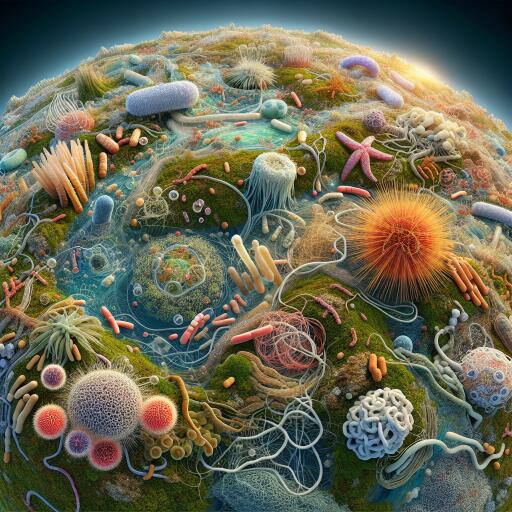
The Unexplored World of Micro-organisms in Guyana
In the lush and vibrant landscapes of Guyana, a narrative seldom explored by the lens of national media unfolds. This narrative is not centered around towering trees or the wide array of wildlife known to this part of the world but is instead a story of the microscopic life forms that silently maintain the ecological equilibrium. The micro-organisms of Guyana, despite their crucial role in environmental sustainability, remain an overlooked chapter in the story of biodiversity.
The environmental richness of Guyana is undeniable, with ecosystems ranging from dense rainforests to wide-spanning wetlands, teeming river networks, and coastal mangroves. These habitats are teeming with microbial life that performs a myriad of functions essential for maintaining the delicate balance of our ecosystems. They are the unsung heroes of environmental processes, playing a pivotal role in decomposition, nutrient cycling, and even the regulation of our planet’s climate. Yet, their stories are rarely told, hidden beneath the spotlight that shines on their larger, more visible counterparts.
This void in our documentary landscape is both surprising and concerning, considering the pivotal roles these micro-organisms play not just in Guyana but globally. They are active ecological agents, influencing not only the health and stability of ecosystems but also the overall wellness of our planet. From fostering soil fertility and aiding in plant growth to being indispensable for water quality and the nutrient balance in aquatic ecosystems, micro-organisms’ activities underpin life as we know it.
Yet, the general audience remains largely in the dark about these microcosms and their significance. Documentaries have the power to illuminate these hidden worlds, translating complex scientific knowledge into engaging visuals and narratives that can captivate and educate. Highlighting the microscopic foundations of life could foster a deeper appreciation and curiosity for the unseen forces that shape our environment, while also serving as a catalyst for education and conservation efforts.
Despite the assumed challenge of portraying micro-organisms as fascinating subjects for a broad audience, modern filmmaking technology offers a solution. High-resolution microscopy and advanced imaging techniques now allow us to depict the micro-organismal world in unparalleled detail. This visual prowess, combined with narrative storytelling about their ecological roles, has the potential to create documentaries that are not only informative but also visually magnificent.
Addressing the world of micro-organisms opens doors to broader discussions on environmental issues, such as the effects of climate change on microbial communities and their roles in biotechnology. These themes offer fresh perspectives on how micro-organisms could be at the forefront of tackling environmental challenges through innovative solutions in fields like bio-fuels, bioremediation, and sustainable agriculture.
The absence of content centered on micro-organisms reflects a larger trend in media towards prioritizing content that promises immediate appeal and profitability over investigations that provoke thought and provoke deeper understanding. However, the value of educational content, such as documentaries on the microscopic life in Guyana, extends beyond immediate commercial success. It lies in the potential to foster a culture of scientific literacy and environmental stewardship.
Furthermore, exploring the micro-organismal world of Guyana is not only about expanding our media content but also about recognizing Guyana’s unique position in contributing valuable insights into microbial diversity and ecosystem functions. Such explorations can enhance Guyana’s stature as a hub for scientific research and environmental conservation, attracting international attention and fostering local scientific and educational development.
In essence, the call for more documentaries on micro-organisms in Guyana is a call to broaden our narratives, to delve into the less visible yet equally critical aspects of our natural world. It’s an invitation to celebrate the scale of life in all its forms, acknowledging that the smallest organisms are often the ones holding the web of life together. Through this exploration, we can deepen our understanding of our planet and our place within it, paving the way for a future where every life form is valued and protected.





Leave a Reply